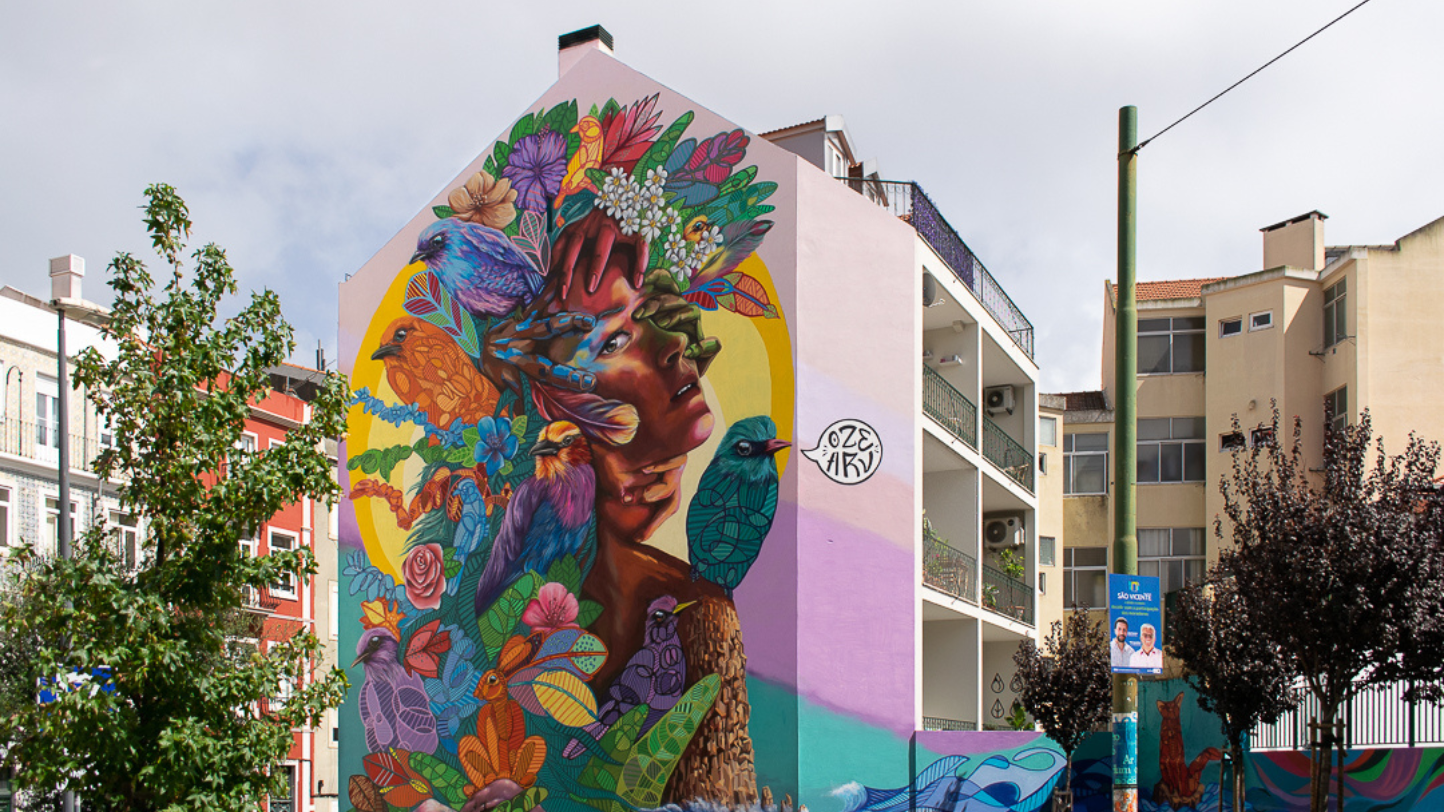
Lisbon is now recognized as a reference city in the international Urban Art circuits. The carnation revolution, April 25, 1974, the date that marks the end of Salazar's dictatorship, was a milestone for the urban art movement. At this revolutionary time, this form of expression had a great impact and strength, always having a greater purpose: communication. Since then, urban art has continued to communicate with its national and international spectators. More and more this artistic movement brings more people to the city to see the graffiti of their favorite artists. In fact, the Portuguese capital has grown and currently urban art is present in every corner of the city, bringing as much demand as tiles and Portuguese pavement. In response to the great growth of this creative area, the Urban Art Gallery of the Cultural Heritage Department of the Lisbon City Council was created. This body's main mission is to promote graffiti and street art in Lisbon, within an authorized framework and according to a perspective of respect for heritage and landscape values, as opposed to illegal acts of vandalism that attack the city. Find out more about the Urban Art Gallery in this interview.
How did the Urban Art Gallery (GAU) come about?
The city of Lisbon, in the early 2000s, was marked by a boom of tourist flows, given a set of major events with impact on a global scale, exponentiated by the appearance of companies low cost to choose Lisbon as a great destination, which increased the pressure on the urban system, opening up new fronts of concern.
An example of this is the intensification of spontaneous “artistic” activity, in which the street and public space are preferred “screens”, which results in a degradation of the quality of the urban image.
When, in 2008, the first reflections on the subject were produced, restricting the condition of urban art to the vandal aspect would be an unfair and reductive attitude, because it would mean consigning to oblivion an entire vigorous artistic movement, which could (withO is proven today) to make a valuable contribution to the aesthetic enjoyment of living in public space. However, this stance would only make sense if assumed in line with the principles of safeguarding, conserving and restoring Lisbon's artistic and cultural heritage, and as a means of raising awareness of its diversity and richness, and of respect for this aesthetic heritage bequeathed not only by our ancestors as well as by our contemporaries.
The Lisbon City Council already supported an effervescent artistic community, which claimed more space and more possibilities for creation. It is in this context that the Urban Art Gallery emerges, which adopts as its main priority the promotion of plastic discourses associated with the graffiti and the street art present in the streets of the city, within an authorized framework, as a strategy for renewing artistic intervention in public space and safeguarding heritage. On the other hand, it emerged at a time when this community was asserting the need for intervention spaces in the city, at the same time that there was a growing prejudice against this type of expression, which was illegally punctuating various spaces in the city, such as the Bairro High.
This situation made CML feel the need to think about a strategy based on the creation of intervention spaces (Calcada da Glória is seminal) and on strengthening ties with this artistic community, seeking to develop a set of unique activities and projects. For example: Project Kronos, the intervention of aryz on Avenida da Liberdade, Recycle the look of painting windows and garbage collection trucks or yet The Faces of the Blue Wall).
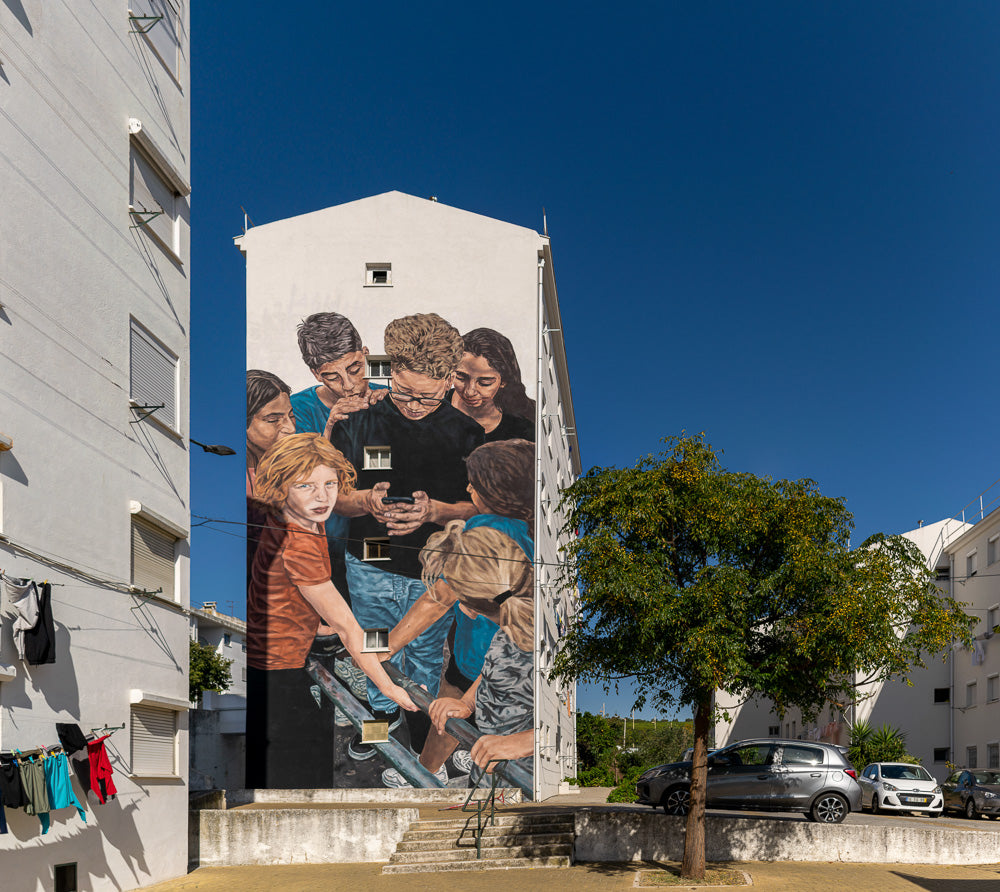
Photo credits: © CML | DMC | DPC | Bruno Cunha
From the carnation revolution to the present day, how has urban art brought appreciation to the city? What were GAU's contributions to the city of Lisbon?
They are totally different historical and assertive moments, and with a chronology not very next. If on the one hand we have the post-Estado Novo with a very important political statement, on the other we have a statement that is predominantly artistic, separated by more than 30 years. There is a big leap that still encompasses seminal moments of the graffiti in the 90s, and all the cultural events that Lisbon promoted.
We can say that today urban art (and the artists who produce it) is inseparable from the cultural affirmation of the city of Lisbon, as one of the most recognized areas of public space and public art. Even if this type of intervention is ephemeral, it attests to the vigor that the city promotes, with the quantity, quality and dispersion of interventions throughout the city, allowing to value territories that previously would not have this capacity of attraction and pride. The affirmation of this artistic expression allowed Portuguese artists to assert themselves and project themselves, making the city of Lisbon one of the Capitals of street art internationally recognized.
As a Lisbon City Council project, GAU contributes to and builds this strategy, maps, organizes and promotes this artistic expression, contributing significantly, either by promoting relevant projects (MURO Festival, Iminente Festival, Incursões pela Arte) or by support for the development of specific own or regularly supported projects.
It is very relevant that the GAU is one of the few institutional structures operating in this area, even being flagged as a case study by the WCCF (World Cities Cultural Forum) – Urban Art Gallery (worldcitiescultureforum.com).
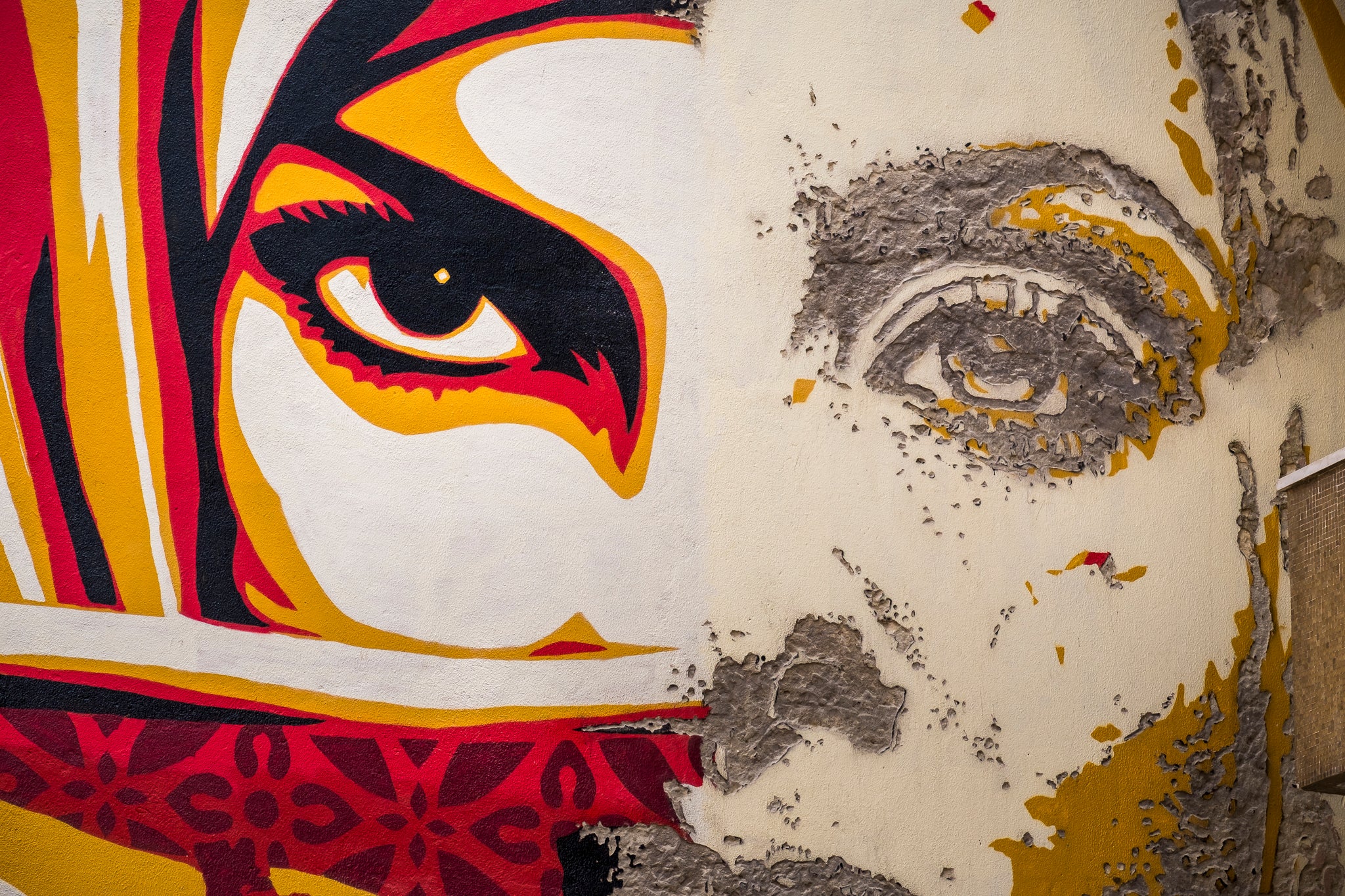
Photo credits: © CML | DMC | DPC | Jose Vicente
Who can apply? How does the whole selection process work?
Any artist can submit a spontaneous application for intervention in the city, which will be evaluated based on a set of criteria that can be consulted on our website: GAU: Where to paint (cm-lisboa.pt). We also have a curatorial process at GAU based on the development of specific projects, where we invite artists to intervene within the scope of a theme and in which we try to give priority to expanding the presence of numerous national and/or international artists. We also promote the opening of public tenders (open call), where any artist can apply, the selection being made by an appointed jury.
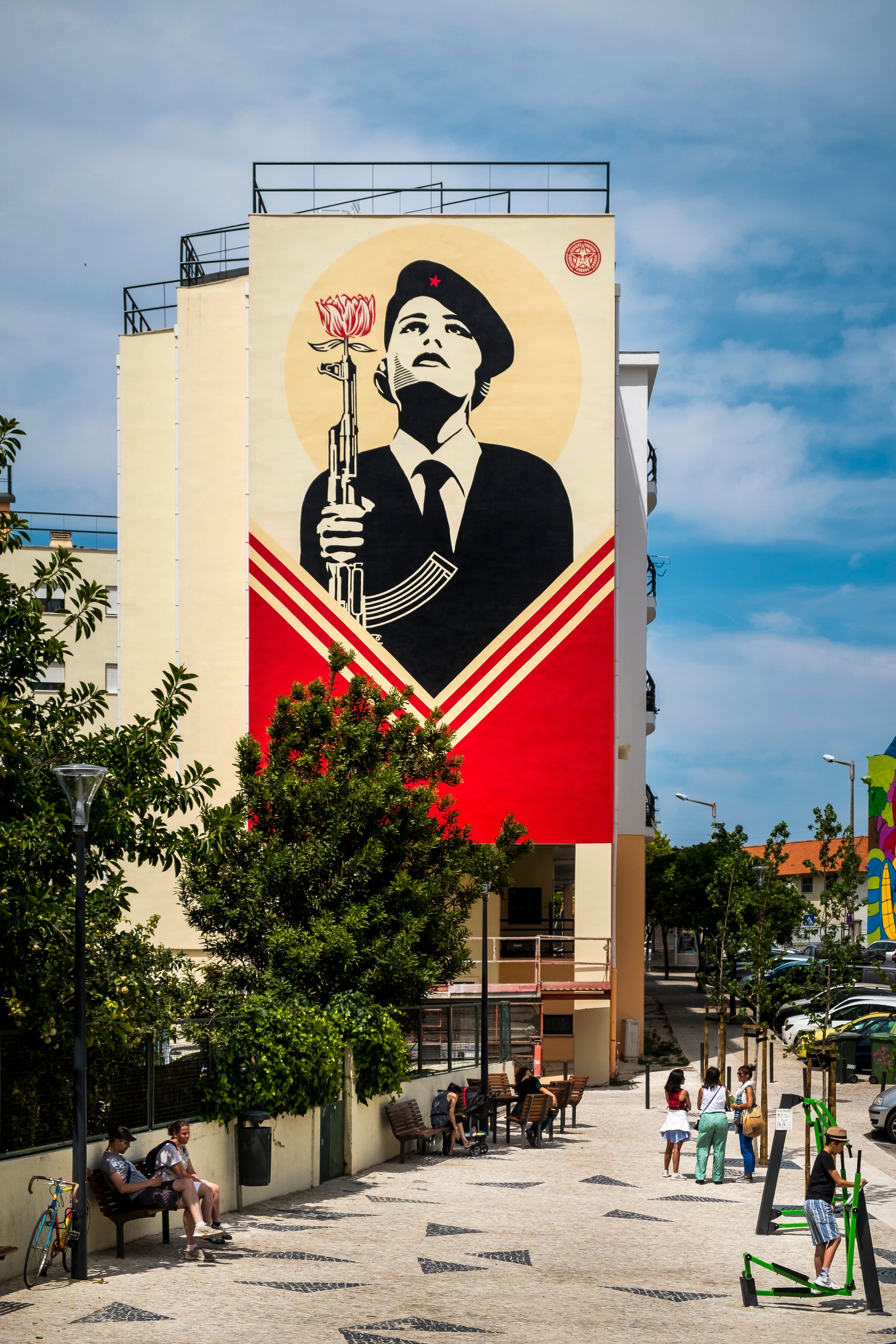
Photo credits: © CML | DMC | DPC | Jose Vicente
How do you choose the intervention sites?
The intervention sites are chosen based on the mapping, theme and surface typology that are important for each project. There is an important and deliberate strategy to create decentralized centers that distribute artistic pieces and manage public art galleries in undervalued spaces in Lisbon, as a way of intrinsically valuing the city as a whole. Trying to understand each piece and artist, we also try to choose the best surface for the intervention, depending on the style, technique and dimension.
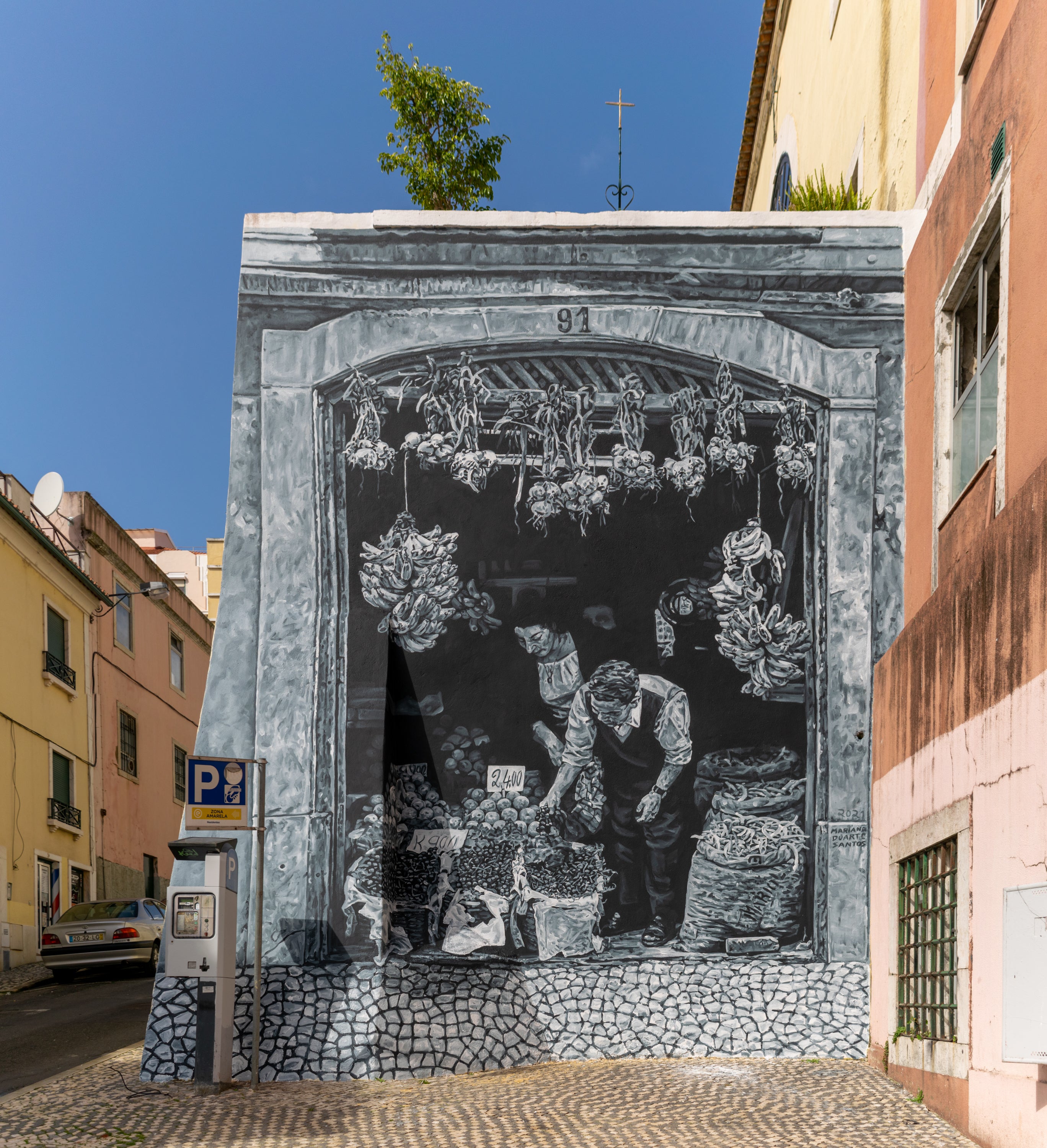
Photo credits: © CML | DMC | DPC | Bruno Cunha
They work on several projects simultaneously. Are there any that you would like to share?
WALL LX_ | Lisbon Urban Art Festival is an event that is of great importance, insofar as it reflects and materializes, through an event circumscribed in space and time, the policy and the programmatic guideline that the Department of Culture of the Lisbon City Council recommends for the graffiti and urban art.
It is a biennial Festival and embodies the need to diversify the cultural offer in Lisbon, generating decentralized centers that distribute artistic pieces and generate public art galleries in devalued and decentralized spaces in the city of Lisbon, also contributing to an appreciation of the municipal housing heritage, managed by Gebalis, Municipal Company. This strategy is aligned as a tool with the cultural strategy of the city.
Speaking only of WALL, the 4 editions carried out (2016 | Carnide, 2017 | Marvila, 2019 | Lumiar and 2021 | Parque das Nações), had the participation of 187 artists, 141 pieces of urban art (68 in municipal buildings, which represents 48%), to which we added 121 guided tours during the Festival period (many more took place a posteriori), 67 workshops held during the Festival. We can nominate Artists as: Add Fuel, AkaCorleone, Bordallo II, Borondo, D*Face, snake, Odeith, Pantone, Pantónio, Peeta or Zurik (just to name a few), who populate these territories with great artistic quality and worldwide recognition, which only enhances these neighborhoods and territories.
The program Incursions into Art, which is carried out annually, together with the Department of Education, which we develop in 1st and 2nd cycle schools, and which has already promoted urban art in 8 parishes, 18 schools (39 classes, 54 teachers, 1207 students), which involved 10 artists, promoted 28 guided tours. It is a very important project of our Educational Service, since through our methodology (see, listen, create) it allows us to understand what we do (see – guided tours), what we can develop (listen – create a public space project in a classroom classroom) and intervene (create – paint a mural in a school space).
also the project One Neighborhood, One Museum, developed with Gebalis, the Lisbon Museum and the Ajuda Parish Council was very important. Gebalis challenged GAU to intervene in a set of facades in Bairro 2 de Maio (Ajuda), known for its associative and community dimension, so it was important to think of a participatory and community logic for the intervention. We invited the Museu de Lisboa to choose 12 works from its collection, which would be chosen by residents and residents (40 lots and 106 families were contacted), the works and their theme were discussed in community assemblies with the selected artists (Mariana Duarte Santos and Regg) who would reinterpret the works (6 selected works) in the light of figures and stories from Bairro 2 de Maio, and which resulted in 6 completed gables.
also the Public Art Program, carried out in partnership with the underdogs, developed annually and which reaches 10 years, where we highlight the presence of 49 artists (many of international renown), with 53 interventions in 21 parishes of the city of Lisbon, and who have done and continue to do a lot for the internationalization of the city of Lisbon in the world panorama of urban art.

Photo credits: © CML | DMC | DPC | Bruno Cunha
GAU involves carrying out guided tours, workshops, and other activities aimed at different audiences, namely school population and in social neighborhoods, seniors, dealing with the teaching of the history of graffiti and street art, its techniques and discourses. Can you share with us the upcoming activities?
We are going to have a year of 2023 very structured around the development of the Free Painting Walls programme, which aims to create a network of free painting spaces in the city of Lisbon (similar to Calçada da Glória). We want to reprogram GAU's editorial line, with the launch of number 10 of Revista da GAU, with the re-edition of previous numbers, and the edition of the new magazine, number 11, which will have a different editorial line, with greater emphasis on the city, for artists and urban art pieces.
The Educational Service will also have greater prominence in 2023, with self-guided routes, in addition to the continued development of the Incursões pela Arte, Workshops and Guided Visits projects. We want to have a greater physical presence at municipal and urban art events, so we are developing an idea of stand that can be a GAU intervention and programming tool.

Photo credits: © CML | DMC | DPC | Bruno Cunha
The Lisbon Urban Art Festival, MURO_LX, developed by the Urban Art Gallery (GAU), was created in 2016 with the purpose of promoting Urban Art in the city of Lisbon. Do you already have news about the next edition?
We can't reveal much about the next edition yet but we are already working on it.
There is more and more graffiti in Lisbon. Can we say that the city is experiencing a cultural effervescence?
GAU and urban art play a fundamental role in promoting Culture, contributing to the cultural effervescence of the city. Culture is a strategic and structuring factor for the creation and preservation of identities, as well as a catalyst for change and progress towards the future, in a transversal and social dimension. Urban Art is also an important tool to achieve this. We feel that the City produces more and has more people working in Culture, and it is up to the Chamber to give space to these spaces, creators, producers and actors capacity for construction and programming.
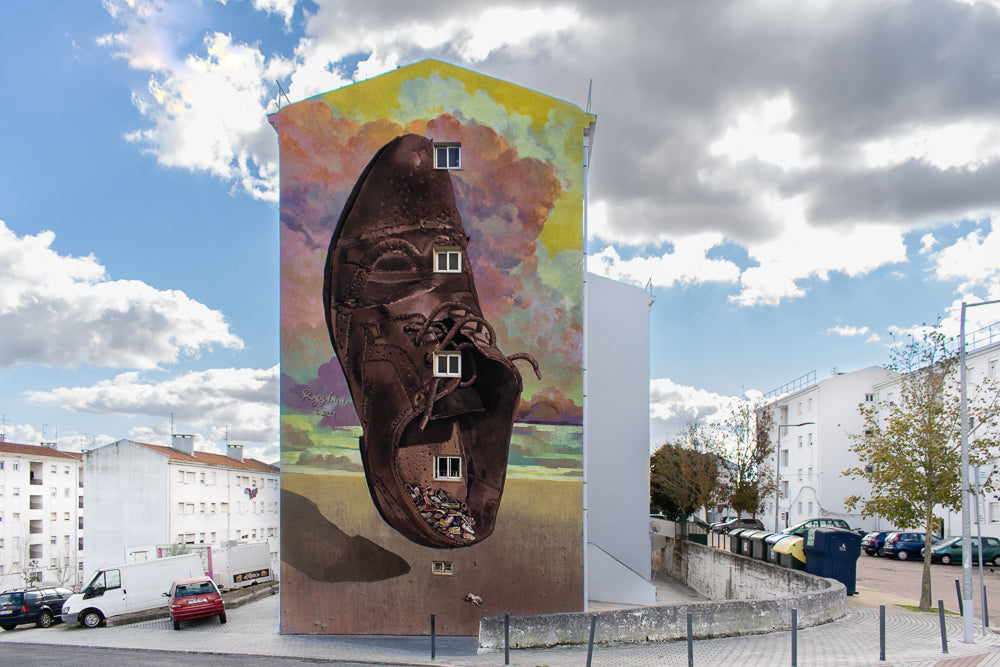
Photo credits: © CML | DMC | DPC | Bruno Cunha
Currently, is there more participation by the population and organizations, public and private, in the programming, execution and dissemination of urban art interventions carried out in the city, or is there still a lot of prejudice in relation to this artistic expression?
There is still some prejudice, just look at our social networks, but it has been blurred by the strength of the work that has been developed, by the creative capacity that the artists have demonstrated. We can tell the story of a resident in Marvila who was very angry that we had not painted the facade of the building where he lived, and who demanded that this intention be fulfilled. This situation would have been unthinkable 14 years ago. We see that the presence of urban art is very relevant in the social, artistic and tourist affirmation of the city of Lisbon.
How do you see the future of urban art in Lisbon?
With more artists, more projects and a consolidated strategy. More walls, which are not barriers, but vehicles for artistic affirmation, cultural production and territorial enhancement.
